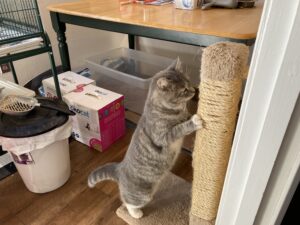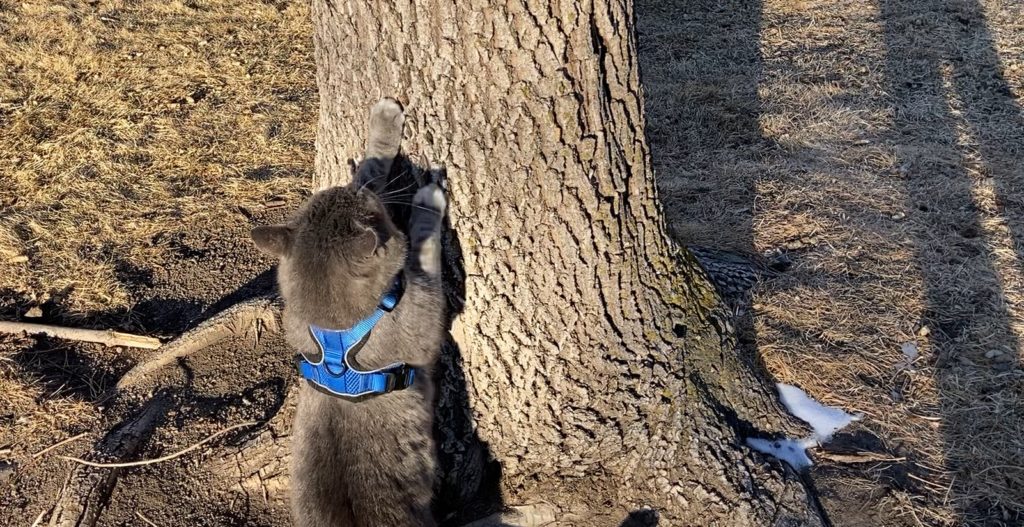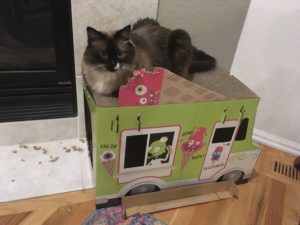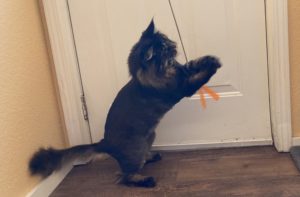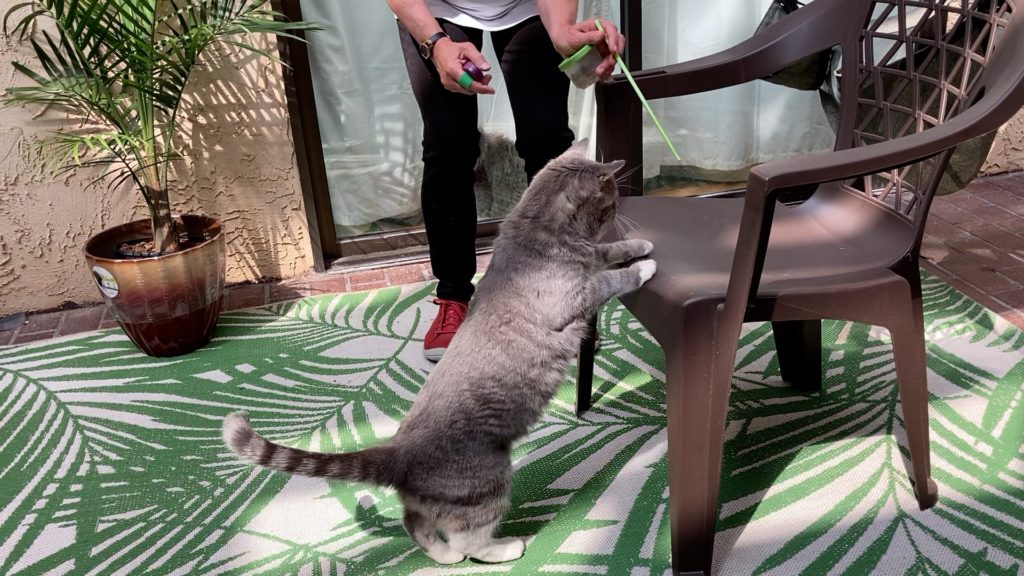
Have more than one cat? How do your cats get along? Are they “bonded” or affiliated?
If there is a reliable source of food, free-roaming cats will often form groups called colonies. Within the colony, there are smaller groups of 2 or more cats that prefer to spend time together. These cats are comfortable sharing resources such as food, water, latrine areas, sleeping and resting places. Some refer to these cats as “preferred associates”; others call them bonded or affiliated.
This post is the first in a 3 part series of “How do your cats get along?”: 1) signs of affiliation 2) signs of conflict 3) personalities in the multi-cat home.
“Preferred associates” show affiliative behaviors. You may find them:
- snuggled up taking a nap
- rubbing against each other when greeting
- grooming each other
- “play” fighting
- twining their tails together
Not all cats have preferred associates. Within the cat colony may be “groups” of just one cat, who keeps to herself but shares the colony territory and resources. So, not only is there the strong bond of the preferred associates, there is also the looser affiliation of the members of the cat colony.
Multi-cat homes host ad hoc cat colonies. When I am taking a history for a veterinary exam, I usually ask guardians with more than one pet how their cats get along. The big three questions for multi-cat homes are:
- Do your cats sleep touching each other?
- Do they play together, with claws sheathed and taking turns?
- Do they groom each other?
These 3 questions barely scrape the surface of how cats get along and whether or not there is potential for conflict or ongoing conflict in the home. Like human social relationships, relationships among cats can be complex.
A survey of 2492 multi-cat households published in 2020* set out to see if there was a relationship between household factors (type of house, number of litter boxes, feeding stations, scratching posts), and how often affiliative and conflict behaviors were seen.
*Elzerman AL, DePorter TL, Beck A, Collin JF. Conflict and affiliative behavior frequency between cats in multi-cat households: a survey-based study. J Feline Med Surg. 2020 Aug;22(8):705-717. doi: 10.1177/1098612X19877988.
Affiliative behaviors in cats – from most frequent to least frequent
sleeping in the same room
 Cats don’t have to be “preferred associates” to choose a spot in the sun in the same room as a housemate cat. As long as there is plenty of space, peaceful coexistence should be possible.
Cats don’t have to be “preferred associates” to choose a spot in the sun in the same room as a housemate cat. As long as there is plenty of space, peaceful coexistence should be possible.
Most frequently seen affiliative behavior – multiple times a day
allogrooming
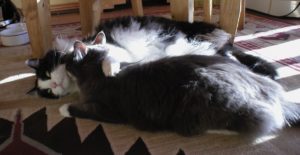
Allogrooming refers to a cat grooming another cat by licking around the head or ears. It occurs most frequently among cats that are related…BUT … it is not restricted to family groups. It can be a way for cats to redirect potential aggression. A few quick licks to the head can soothe a would-be combatant, avoiding a fight. Sometimes, you will see cats who are not particularly chummy grooming each other’s head or neck.
Frequency – several times a day
Sleeping Touching each other
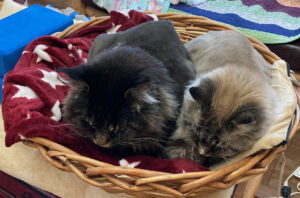
I view sleeping snuggled together something bonded cats do whereas the casual touch of cats napping next to each other indicates a weaker affiliation.
Frequency- several times a day
Touching noses
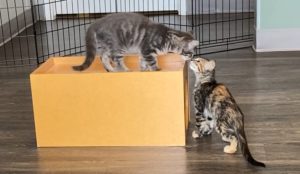
Colony cats touch noses when returning from foraging or hunting. Each colony has its signature scent that helps the members of the colony identify each other. House cats being inside all the time may not need to engage in this identifying behavior as much as their outdoor counterparts. However, a cat who has been to the veterinary hospital may not smell quite right to his housemates and peaceful coexistence can be disrupted.
Frequency – once a day
Why isn’t play in the list of affiliative behaviors?
Play between cats incorporates more than one basic behavior. Because social play between cats is “play fighting” and can easily escalate into a fight, behaviors like chasing and stalking are often categorized as conflict behaviors. (See cats at play: a guide to mutual social play)
There are many other things that cats do that may be “affiliative” – tail-twining and rubbing up against each other – that were not included in the study above. However, this basic list can give you an idea of whether harmony reigns in your cat kingdom. Pay attention to how your cats get along and to their body language when interacting.
Next week, we will take a look at “conflict” behaviors and how frequent the survey found them to be.

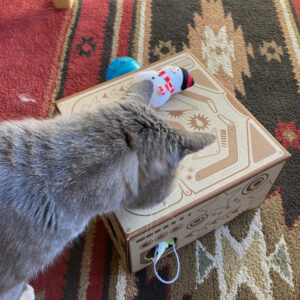
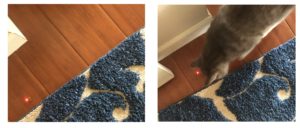
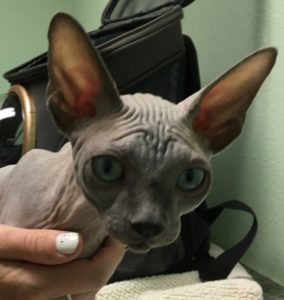
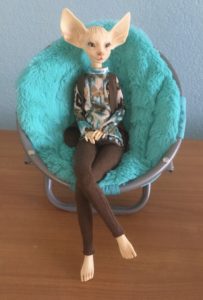
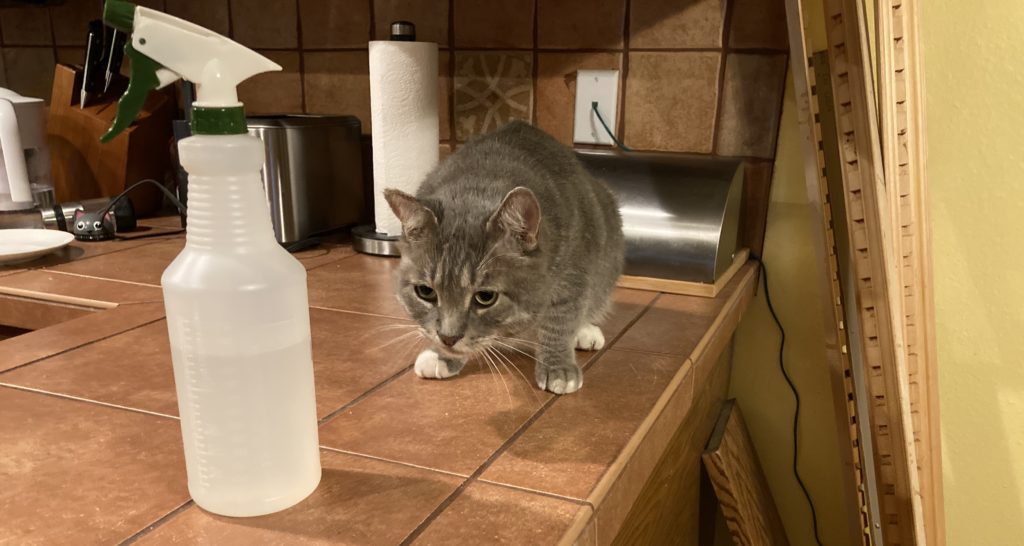 After adopting a feral cat 3 years ago, I am still struggling with cats on the counter. Gus spent most of his wild life dumpster diving, and hunting mice and bugs for food. He certainly would have availed himself of any food a good samaritan left out for the community cats. Understandably, the kitchen counter is a cornucopia of food as far as he is concerned.
After adopting a feral cat 3 years ago, I am still struggling with cats on the counter. Gus spent most of his wild life dumpster diving, and hunting mice and bugs for food. He certainly would have availed himself of any food a good samaritan left out for the community cats. Understandably, the kitchen counter is a cornucopia of food as far as he is concerned.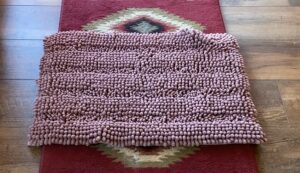 Choose a mat for your cat to sit on.
Choose a mat for your cat to sit on.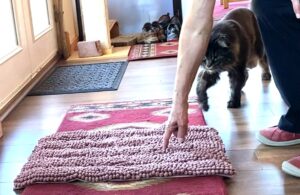
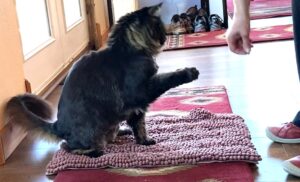
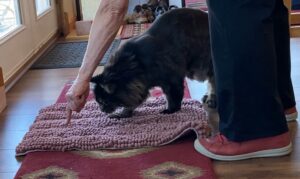
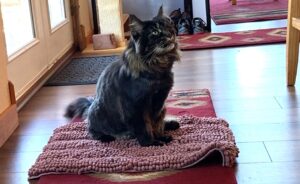 “Shape” the behavior by having her stay on the mat for increasingly longer periods of time.
“Shape” the behavior by having her stay on the mat for increasingly longer periods of time.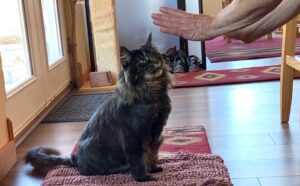 Establish a cue to let her know she can leave the mat.
Establish a cue to let her know she can leave the mat.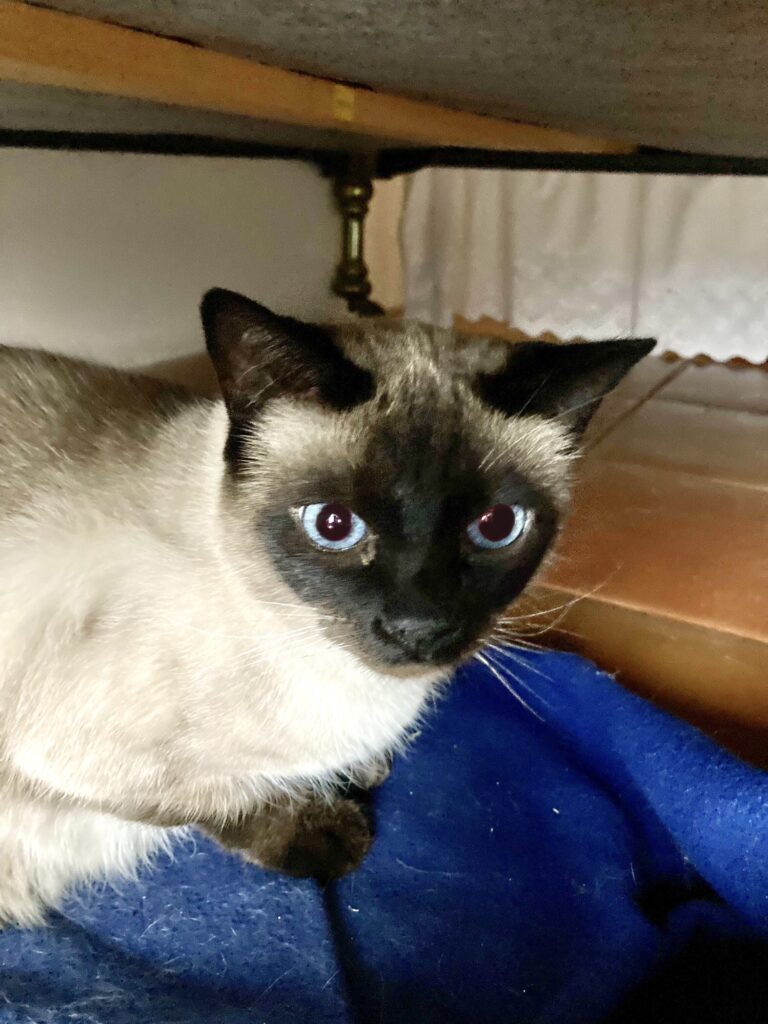
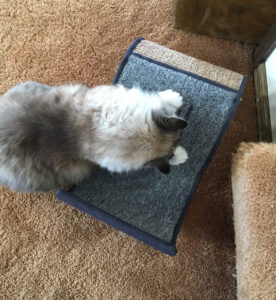
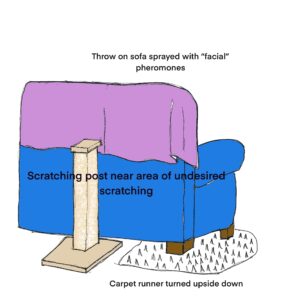 Use a synthetic pheromone spray such as “Feliway” Classic or Comfort Zone Calming. These are synthetic versions of the secretions cats deposit by rubbing their cheeks against things. To avoid staining your sofa, we can spray a throw or blanket that we drape over the sofa. Initially, you will need to spray this daily.
Use a synthetic pheromone spray such as “Feliway” Classic or Comfort Zone Calming. These are synthetic versions of the secretions cats deposit by rubbing their cheeks against things. To avoid staining your sofa, we can spray a throw or blanket that we drape over the sofa. Initially, you will need to spray this daily.

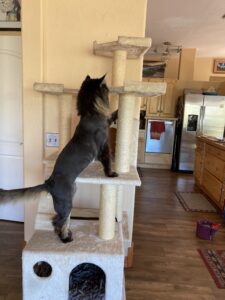 This tall cat tree is located in the interior of the house away from doors and windows. The younger cats (6 years), Zelda and Gus, use this tower to snooze on the upper levels or to get to the tops of the kitchen cabinets. Although it does meet the recommendations for the ideal scratcher, the cats don’t scratch on this tree all that much.
This tall cat tree is located in the interior of the house away from doors and windows. The younger cats (6 years), Zelda and Gus, use this tower to snooze on the upper levels or to get to the tops of the kitchen cabinets. Although it does meet the recommendations for the ideal scratcher, the cats don’t scratch on this tree all that much.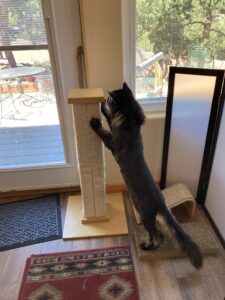 This very tall post (it is 41″) with sisal fabric is at the front door. It is popular with everyone, from the 17 lb Coon cat to the small senior at 8 lb. All four cats scratch before going out for a walk or when they sit to look out the window in the front door. The horizontal cardboard scratchers at the front door also see consistent use. The cats tend to use these with all 4 feet on the scratcher.
This very tall post (it is 41″) with sisal fabric is at the front door. It is popular with everyone, from the 17 lb Coon cat to the small senior at 8 lb. All four cats scratch before going out for a walk or when they sit to look out the window in the front door. The horizontal cardboard scratchers at the front door also see consistent use. The cats tend to use these with all 4 feet on the scratcher.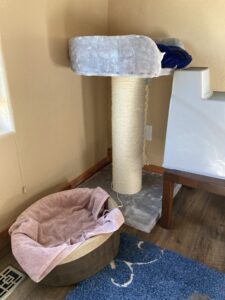 The sisal-covered base of this extra-large cat bed is tall enough for the large Maine Coon to scratch. This cat bed is located in the bedroom. It was purchased for the Maine Coon cat but has been taken over by 8 lb Athena, who sleeps in this bed or in her heated bed at the base of the scratcher. When she gets out of bed, she stretches and scratches on this scratcher. This is used infrequently by the other three cats.
The sisal-covered base of this extra-large cat bed is tall enough for the large Maine Coon to scratch. This cat bed is located in the bedroom. It was purchased for the Maine Coon cat but has been taken over by 8 lb Athena, who sleeps in this bed or in her heated bed at the base of the scratcher. When she gets out of bed, she stretches and scratches on this scratcher. This is used infrequently by the other three cats.